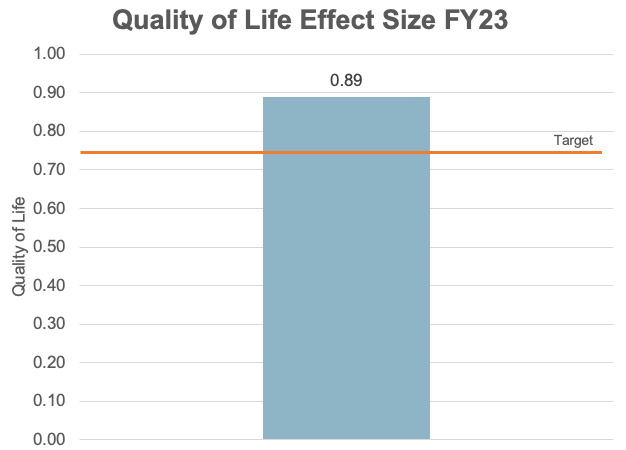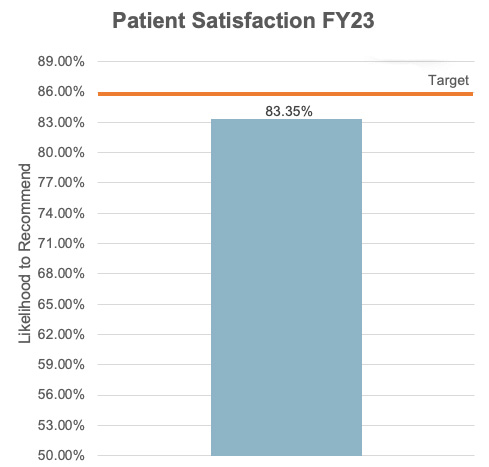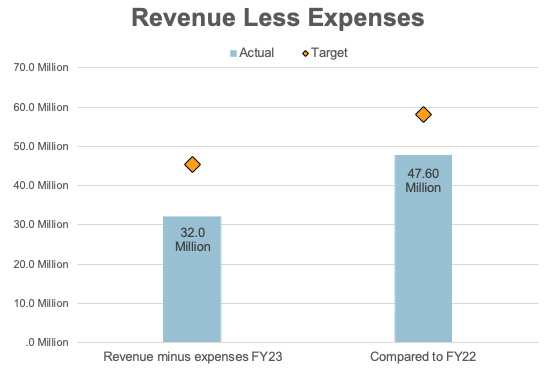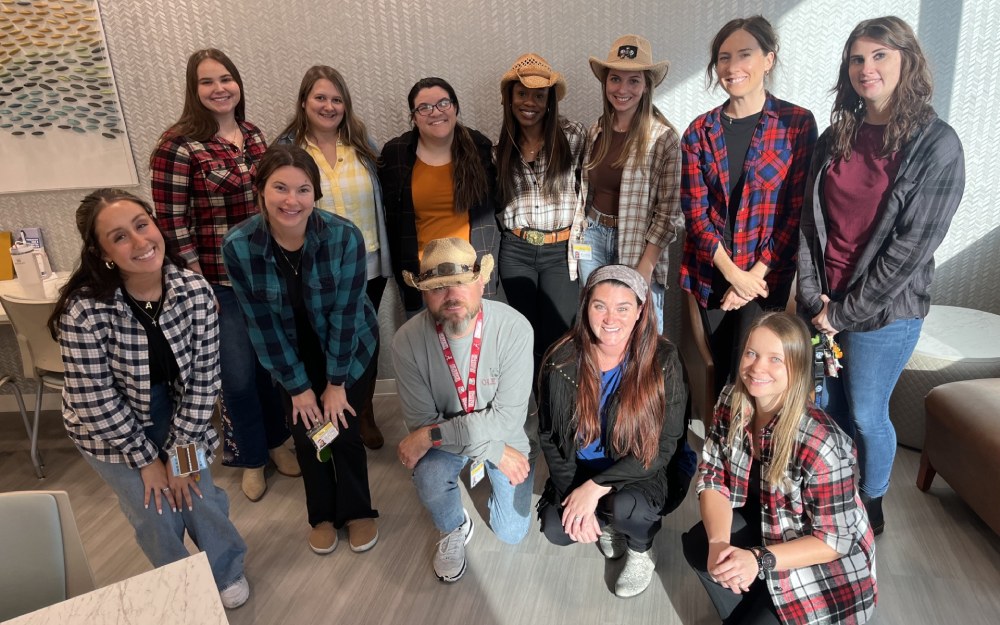
FY23 system results
09/14/23 05:30:pmTo ensure we are accountable to our organizational priorities for Clinical Effectiveness, Patient Experience, Healthy Culture, Community Outreach, and Financial Sustainability, Rogers tracks key metrics and shares results on a quarterly and annual basis.
Clinical Effectiveness
Rogers is dedicated to enhancing our evidence-based system of care and publishing outcomes that demonstrate that our treatments are highly effective.
Measure of success
Quality of Life Enjoyment and Satisfaction Questionnaire self-assessment completed at discharge of each level of treatment by all patients, measuring the degree of enjoyment and satisfaction experienced in various areas of daily functioning.

“Our therapeutic and psychiatric interventions combine to result in significant improvement in our patients’ quality of life. Seeing these remarkable scores again this year confirms that our evidence-based protocols and intensive psychiatric care are what makes Rogers so special,” explains Stephanie Eken, MD, chief medical officer.
“These data demonstrate that not only are we helping patients improve their mental health symptoms, but we are also having a large and significant impact on their overall quality of life as a result of the treatment they receive at Rogers,” adds Rachel Leonard, PhD, executive director of clinical strategy.
Patient Experience
Rogers is committed to ensuring that our patients and their families are treated with the highest degree of compassion, guidance, and professionalism throughout their treatment experience.
Measure of success
- Patient Satisfaction: target varies by location: 84% or more weighted average of giving a good or very good likelihood of recommending Rogers on the Press Ganey survey.
Patient Satisfaction FY23 results

Inpatient: 5,207 surveys; 79.16% likelihood of recommending Rogers (down from 80.04% in FY22)
Outpatient: 3,377 surveys; 89.8% likelihood of recommending Rogers (up from 87.57% in FY22 and doubled the number of surveys collected)
Improvements in outpatient patient satisfaction results and increased participation were not by chance. Outpatient Serivces leadership kept an intense focus on patient satisfaction results across all clinics and responded to feedback. Jennifer Park, PhD, executive director, Clinical Services, explains, "Leaders did a great job of making this a priority metric to track, leading to an increased return rate and more accurate data with the larger sample size."
Healthy Culture
Rogers is committed to building a healthy culture that motivates our employees to perform at a high level and in turn provide the best environment for our patients to recover.
Measure of success
- Varies by location with an average of 72% positive response on 7-question index (average of seven survey questions on satisfaction, pride, and commitment to the job and organization).
Rogers achieved a 67% engagement score from our annual survey taken in June. (down from 72% in FY22 and 69% from a pulse survey in FY22.)
The participation rate was 80%, up from 79% last year.
“Employee engagement is one of our top priorities and critical to everything else we do. Given the amount of organizational change we’ve experienced, this year’s Employee Engagement Survey results are understandable, but we are wholeheartedly committed to bringing about change that will improve how employees feel about working for Rogers,” shares Cindy Meyer, president and CEO. She adds, “Action planning at the department, site, and system level will be more important than ever.”
Community Outreach
Rogers is committed to developing relationships throughout the communities we serve to help build awareness and access to high quality behavioral health services.
Measures of success
-
Referring provider likelihood to recommend Rogers. Goal: At least 90% of survey respondents say they will continue to refer and/or recommend Rogers.
-
This year’s method changed from a 5-point scale to 10-point scale based on best practice use of net promoter score (NPS) to enable a better comparison to our competitors.
-
This is not a Success Share metric.
FY23 results
More than 1,200 referring providers from 33 states completed our annual survey evaluating their satisfaction with Rogers. The number of participants doubled from last year. Of the 839 who answered, 54% responded 9 or 10 indicating they are highly likely to refer to or recommend Rogers for specialty behavioral health treatment.
- A score of 9 or 10 indicates a promoter of Rogers and is considered a loyal follower who will go out of their way for Rogers and recommend our services.
- A net promoter score of 54% means we have a larger than average group of promoters sharing their positive perceptions with their personal networks.
- In FY22, nearly 90% of respondents said they were very likely (53.64%) or likely (35.92%) to refer or recommend Rogers. Though it is not a perfect comparison, if we include those who answered with a 7 or 8, the result is 87%.
Financial Sustainability
Rogers is committed to responsible growth and sound fiscal management to ensure that we have the needed resources to serve our patients.
Measures of success

- FY23 EBIDA Target (Revenue minus expenses): $45.3 million
FY23 Results
Charity Care = 2.1% (down from 2.4% in FY22)
Revenue minus expenses (EBIDA) = $32 million (down from $47.6 million in FY22)
FY24 Success Share targets will be communicated with the launch of the FY24 – FY27 Strategic Plan.





